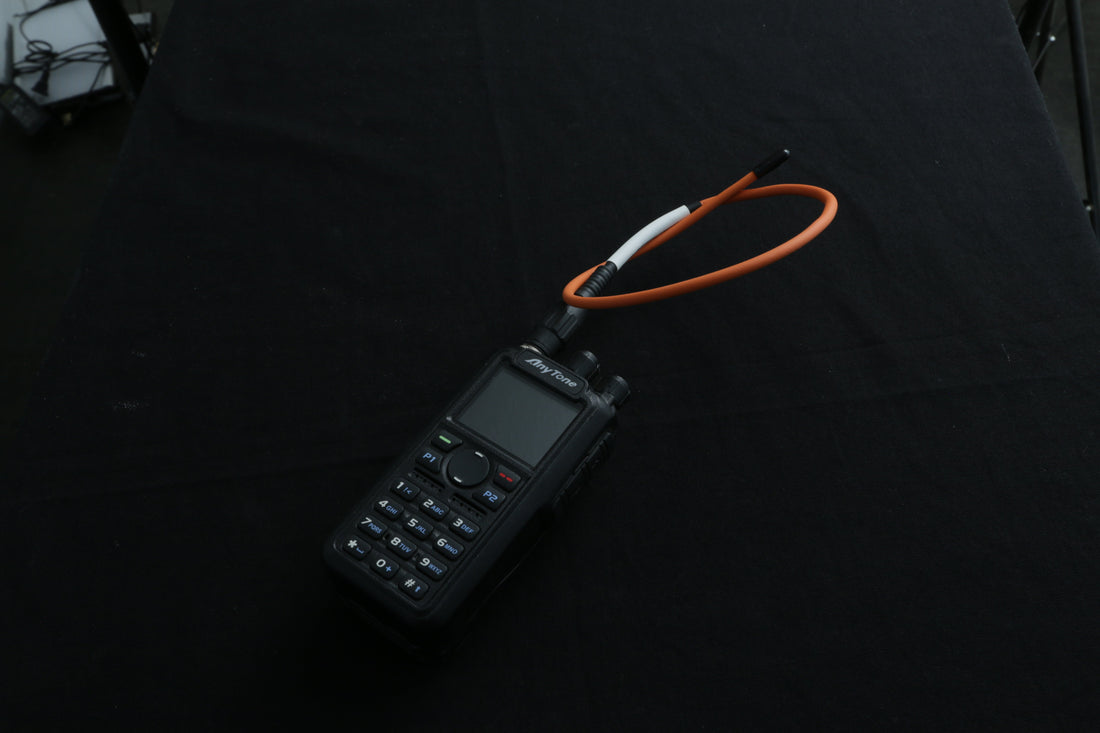
Unlocking Your Signal: A Guide to Antenna Adapters | Iron Spear Outfitters
Share
Unlocking Your Signal: A Guide to Antenna Adapters
Let's get straight to the point. Your high-performance Maximus Antenna has a **BNC Male** connector for a secure, quick-release fit. Your radio likely has a different connector, most often **SMA-Female** (on handhelds) or **SO-239** (on mobile/base rigs). You need the correct adapter to bridge that gap.
The chart below is your cheat sheet. Find your radio's manufacturer, and you'll find the exact adapter you need. For a deeper dive into why this is important and best practices, read the detailed sections at the bottom.
Maximus Antenna Adapter Reference Chart
| Manufacturer | Radio Model(s) | Radio Connector Type | Required Adapter | Notes |
|---|---|---|---|---|
| Yaesu | FT-60R, VX-6R, VX-7R, VX-8DR | SMA-Female | SMA-Male to BNC-Female (Thin-Wall) | CRITICAL: A thin-wall/slim-line adapter is required due to the recessed port. |
| Yaesu | FT-5DR, FT-70DR, FT-3DR, FT-2DR | SMA-Female | SMA-Male to BNC-Female | A standard adapter will work perfectly. |
| Yaesu | FT-817, FT-818 | BNC-Female (Front) / SO-239 (Rear) | None (Front) / PL-259 to BNC-Female (Rear) | Direct connection on front. Use rear for base/mobile setups. |
| Yaesu | FTM-300DR, FTM-400XDR, FTM-6000R | SO-239 (UHF-Female) | PL-259 (UHF-Male) to BNC-Female | Standard for most mobile/base station radios. |
| Icom | ID-51A, ID-52A, IC-T10, IC-V86 | SMA-Female | SMA-Male to BNC-Female | Standard adapter is suitable for these models. |
| Icom | IC-705, IC-905 | BNC-Female | None | Direct connection. The IC-705 is perfectly matched for the Maximus. |
| Icom | IC-2730A, IC-7300, IC-9700 | SO-239 (UHF-Female) | PL-259 (UHF-Male) to BNC-Female | Standard for most mobile/base station radios. |
| Kenwood | TH-D74, TH-F6A, TH-K20A | SMA-Female | SMA-Male to BNC-Female | Standard adapter is suitable for these models. |
| Kenwood | TM-V71A, TM-D710GA | SO-239 (UHF-Female) | PL-259 (UHF-Male) to BNC-Female | Standard for most mobile/base station radios. |
| Baofeng | UV-5R, BF-F8HP, UV-82, UV-9R | SMA-Female | SMA-Male to BNC-Female | The vast majority of these radios use this connector type. |
| Baofeng / Other | Some older/uncommon models | SMA-Male | SMA-Female to BNC-Female | Special Case: Verify your radio has a center pin and threads on the outside. |
| Anytone | AT-D878UVII Plus, AT-D578UVIII | SMA-Female (HT) / SO-239 (Mobile) | SMA-Male to BNC-Female (HT) / PL-259 to BNC-Female (Mobile) | Check specific model; HTs are SMA-F, Mobiles are SO-239. |
| Wouxun | KG-UV9D, KG-Q10H | SMA-Female | SMA-Male to BNC-Female | Standard adapter is suitable for these models. |
| Radioddity | GD-77, GS-5B | SMA-Female | SMA-Male to BNC-Female | Standard adapter is suitable for these models. |
| Elecraft | KX2, KX3 | BNC-Female | None | Direct connection. A popular choice for QRP/SOTA operators. |
| Lab599 | Discovery TX-500 | BNC-Female | None | Direct connection. Built for rugged field use with BNC antennas. |
| General | Any radio with a "ducky" antenna | SMA-Female | SMA-Male to BNC-Female | Most modern HTs have moved to the SMA-Female standard. |
| General | Any mobile/base radio | SO-239 (UHF-Female) | PL-259 (UHF-Male) to BNC-Female | SO-239 is the industry standard for non-handheld radios. |
Disclaimer
This chart has been compiled from manufacturer specifications and trusted community sources. As Iron Spear Outfitters does not own every radio listed, connector types can occasionally vary by production date or region. We strongly recommend visually inspecting your radio's antenna port to confirm its connector type before ordering to ensure a perfect fit.
The Deep Dive: Details for the Expert
The Who, What, Where, When, & Why of Adapters
- Who needs an adapter? Anyone whose antenna connector doesn't match their radio's antenna port. It's a common situation for anyone serious about radio performance.
- What is an adapter? It's a small, precision-made device that acts as a bridge between two different types of connectors (e.g., connecting a BNC antenna to an SMA radio port).
- Where are adapters used? Everywhere! From handheld radios (HTs) and vehicle rigs to base stations, adapters are fundamental to creating a versatile communication setup.
- When do you need one? You need an adapter the moment you upgrade your stock antenna to a high-performance model like the Maximus, which uses a different connector for better durability and performance.
-
Why are they necessary?
- Interoperability: The radio world is filled with different connector standards. Adapters are the universal translators that allow your gear to work together.
- Strain Relief: Using an adapter can save the wear and tear on your radio's native connector, which can be expensive or impossible to repair. It's better to wear out a replaceable adapter than your radio's hardware.
- Flexibility: Adapters allow you to use your single Maximus Antenna across multiple radios in your inventory, from your handheld to your mobile rig.
The Critical Difference: Standard vs. Thin-Wall Adapters
Not all adapters are created equal, and this is especially true for Yaesu radio owners. Many popular Yaesu radios (like the FT-60R and VX series) feature a recessed antenna port. A standard adapter with a wide base simply won't fit; the adapter's "shoulder" will hit the radio's casing before it can make a secure electrical connection. For these models, a thin-wall or slim-line adapter is mandatory. These adapters have a much narrower base, allowing them to seat properly inside the recessed port, ensuring a solid and reliable link. Using the wrong adapter will result in a loose connection and terrible performance. It's also important to note that while most handheld radios have an SMA-Female port, some uncommon models have an SMA-Male port, which requires a special SMA-Female to BNC-Female adapter.
Best Practices for Using Adapters
- Quality First: A cheap adapter is a weak link. Invest in high-quality adapters with gold-plated connectors and a solid build. This minimizes signal loss (insertion loss) and ensures durability.
- Hand-Tighten Only: Never use tools to tighten an adapter, especially on an HT. Overtightening will destroy the delicate threads on your radio. A firm, hand-tight connection is all you need.
- Minimize the Chain: Use one adapter to get the job done. Stacking multiple adapters (`adapter-ception`) is a recipe for signal loss and mechanical failure.
- Weatherproof for Field Use: If you're operating in the elements, wrap the connection point with self-amalgamating tape or quality electrical tape to keep moisture out.
From the Bench: Common Adapter Mistakes
Before you transmit, do a quick visual check. Getting this wrong is the #1 reason for poor performance. The difference is subtle but critical.
The Thin-Wall Difference
This image shows a side-by-side comparison of a standard adapter's wide base versus the narrow base of the thin-wall adapter. This visually justifies why one is mandatory for certain radios with recessed ports.

Pro-Tip: Strain Relief for Mobile & Base Rigs
An adapter is great for your HT, but what about your mobile or base rig? Don't let a heavy cable put stress on your radio's connector. The expert solution is a strain-relief pigtail. Instead of a rigid, one-piece adapter, use a short, flexible 6-inch coaxial cable (e.g., PL-259 on one end, BNC-Female on the other). This absorbs all the weight and tension from your main coax line, protecting the expensive-to-repair connector on your radio.
Expert FAQ
Is a gold-plated adapter really better than a nickel one?
Yes. While both work, gold offers superior corrosion resistance and slightly better conductivity over the long term. In a communications setup, every connection point matters. We prefer gold-plated connectors for maximum reliability, especially for field use where moisture can be a factor.
How much signal do I actually lose with an adapter?
This is called 'insertion loss.' A high-quality, properly machined adapter like the ones we stock will have a negligible loss, typically less than 0.2 dB. A cheap, poorly made adapter can have a loss of 1 dB or more, which is significant. That's why we only sell adapters that meet our performance standards.
My connection feels wobbly. What's wrong?
This is almost always one of two things: You're using a standard adapter on a radio that needs a thin-wall adapter, or the threads on the radio or adapter have been damaged from over-tightening. Always tighten adapters by hand until they are just snug. Never use tools.
